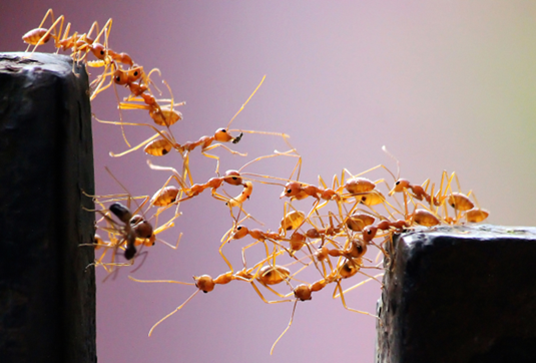---
language:
- multilingual
license: apache-2.0
library_name: transformers
tags:
- nlp
- code
- vision
- chemistry
- engineering
- biology
- bio-inspired
- text-generation-inference
- materials science
pipeline_tag: image-text-to-text
inference:
parameters:
temperature: 0.3
widget:
- messages:
- role: user
content: <|image_1|>Can you describe what you see in the image?
---
## Model Summary
Cephalo is a series of multimodal materials science focused vision large language models (V-LLMs) designed to integrate visual and linguistic data for advanced understanding and interaction in human-AI or multi-agent AI frameworks.
A novel aspect of Cephalo's development is the innovative dataset generation method. The extraction process employs advanced algorithms to accurately detect and separate images and their corresponding textual descriptions from complex PDF documents. It involves extracting images and captions from PDFs to create well-reasoned image-text pairs, utilizing large language models (LLMs) for natural language processing. These image-text pairs are then refined and validated through LLM-based NLP processing, ensuring high-quality and contextually relevant data for training.
Cephalo can interpret complex visual scenes and generating contextually accurate language descriptions and answer queries.
The model is developed to process diverse inputs, including images and text, facilitating a broad range of applications such as image captioning, visual question answering, and multimodal content generation. The architecture combines a vision encoder model and an autoregressive transformer to process complex natural language understanding.

Cephalo provides a robust framework for multimodal interaction and understanding, including the development of complex generative pipelines to create 2D and 3D renderings of material microstructures as input for additive manufacturing methods.
This version of Cephalo, lamm-mit/Cephalo-Phi-3-vision-128k-4b-beta, is based on the Phi-3-Vision-128K-Instruct model. The model was trained on a combination of scientific text-image and text-only data. The model has a context length of 128,000 tokens. Further details, see: https://huggingface.co/microsoft/Phi-3-vision-128k-instruct.
### Chat Format
Given the nature of the training data, the Cephalo-Phi-3-vision-128k-4b-beta model is best suited for a single image input wih prompts using the chat format as follows.
You can provide the prompt as a single image with a generic template as follow:
```markdown
<|user|>\n<|image_1|>\n{prompt}<|end|>\n<|assistant|>\n
```
where the model generates the text after `<|assistant|>` . For multi-turn conversations, the prompt should be formatted as follows:
```markdown
<|user|>\n<|image_1|>\n{prompt_1}<|end|>\n<|assistant|>\n{response_1}<|end|>\n<|user|>\n{prompt_2}<|end|>\n<|assistant|>\n
```
### Sample inference code
This code snippets show how to get quickly started on a GPU:
```python
from PIL import Image
import requests
from transformers import AutoModelForCausalLM
from transformers import AutoProcessor
model_id = "lamm-mit/Cephalo-Phi-3-vision-128k-4b-beta"
model = AutoModelForCausalLM.from_pretrained(model_id, device_map="cuda", trust_remote_code=True, torch_dtype="auto")
processor = AutoProcessor.from_pretrained(model_id, trust_remote_code=True)
question = "What is shown in this image, and what is the relevance for materials design? Include a discussion of multi-agent AI."
messages = [
{"role": "user", "content": f"<|image_1|>\n{question}"},
]
url = "https://d2r55xnwy6nx47.cloudfront.net/uploads/2018/02/Ants_Lede1300.jpg"
image = Image.open(requests.get(url, stream=True).raw)
prompt = processor.tokenizer.apply_chat_template(messages, tokenize=False, add_generation_prompt=True)
inputs = processor(prompt, [image], return_tensors="pt").to("cuda:0")
generation_args = {
"max_new_tokens": 512,
"temperature": 0.1,
"do_sample": True,
"stop_strings": ['<|end|>',
'<|endoftext|>'],
"tokenizer": processor.tokenizer,
}
generate_ids = model.generate(**inputs, eos_token_id=processor.tokenizer.eos_token_id, **generation_args)
# remove input tokens
generate_ids = generate_ids[:, inputs['input_ids'].shape[1]:]
response = processor.batch_decode(generate_ids, skip_special_tokens=True, clean_up_tokenization_spaces=False)[0]
print(response)
```
Sample output:

Image by [Vaishakh Manohar](https://www.quantamagazine.org/the-simple-algorithm-that-ants-use-to-build-bridges-20180226/)
The image shows a group of red ants (Solenopsis invicta) climbing over a vertical wooden post. The ants are using their long legs and antennae to navigate the rough surface of the post, which is covered in small hairs. The relevance for materials design is that the ants' ability to climb over rough surfaces can inspire the development of new materials with improved adhesion and grip properties. The ants' hairs are made of a protein called cuticular, which is known for its strong adhesive properties. By studying the structure and properties of these hairs, researchers can gain insights into how to design materials with similar properties.
Multi-agent AI refers to the use of multiple agents, such as ants, to perform tasks or solve problems. In this case, the ants are working together to climb over the post, which requires coordination and communication between the individual ants. This can inspire the development of multi-agent AI systems that can work together to solve complex problems.
Overall, the image of red ants climbing over a wooden post can provide valuable insights into materials design and multi-agent AI. By studying the ants' behavior and the properties of their hairs, researchers can develop new materials with improved adhesion and grip properties, and design multi-agent AI systems that can work together to solve complex problems.
## Dataset generation
The schematic below shows a visualization of the approach to generate datasets for training the vision model. The extraction process employs advanced algorithms to accurately detect and separate images and their corresponding textual descriptions from complex PDF documents. It involves extracting images and captions from PDFs to create well-reasoned image-text pairs, utilizing large language models (LLMs) for natural language processing. These image-text pairs are then refined and validated through LLM-based NLP processing, ensuring high-quality and contextually relevant data for training.
The image below shows reproductions of two representative pages of the scientific article (here, Spivak, Buehler, et al., 2011), and how they are used to extract visual scientific data for training the Cephalo model.

## Citation
Please cite as:
```
@article{Buehler_Cephalo_2024,
title = {Cephalo, a series of multi-modal vision-language models for bio-inspired materials and mechanics},
author = {M.J. Buehler},
journal = {},
year = {2024},
volume = {},
pages = {},
url = {}
}
```